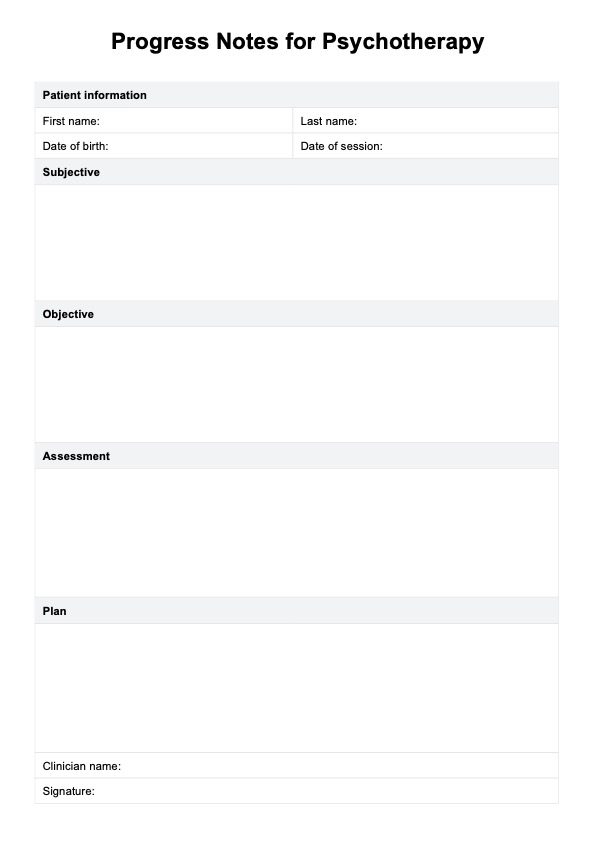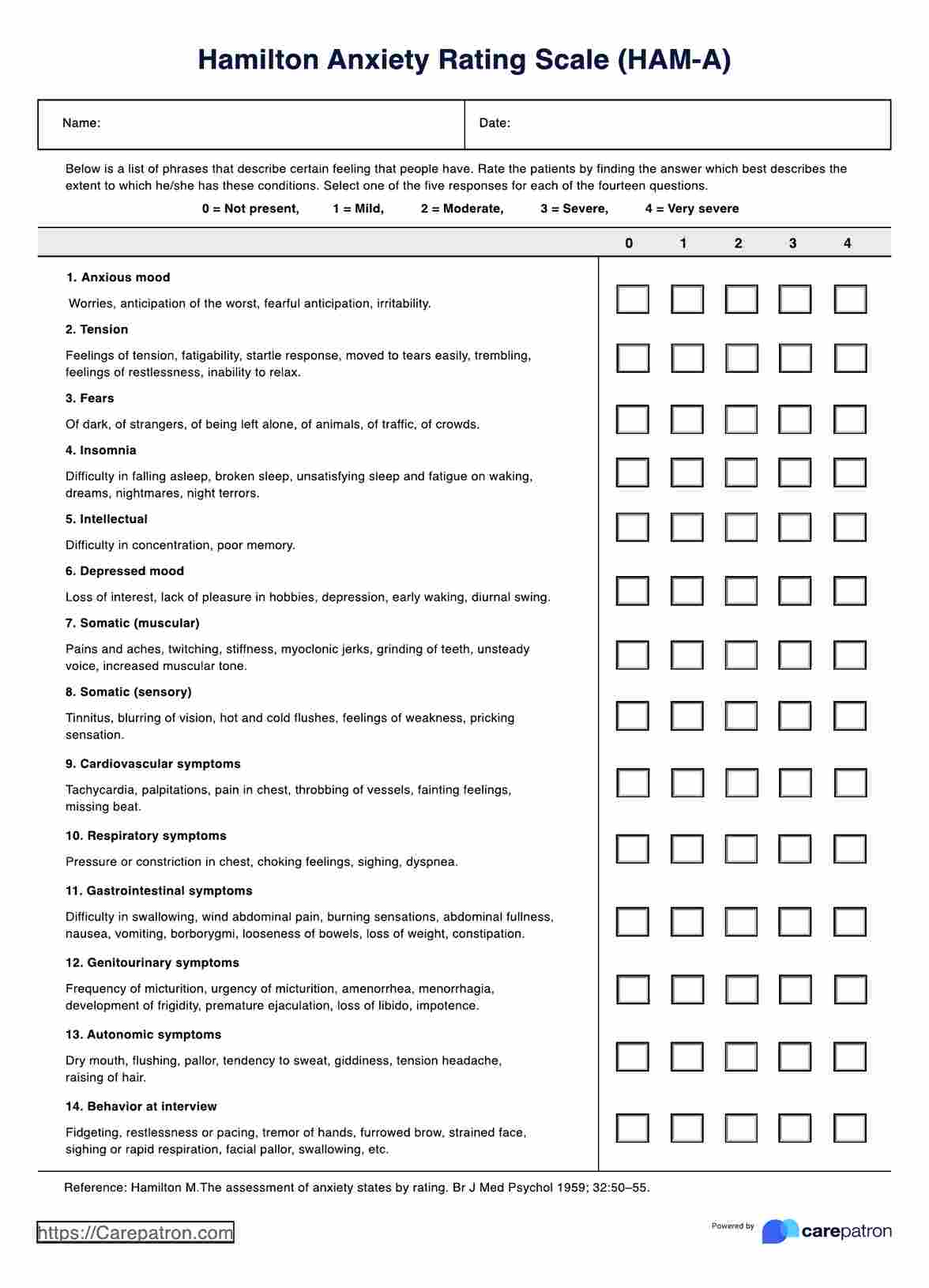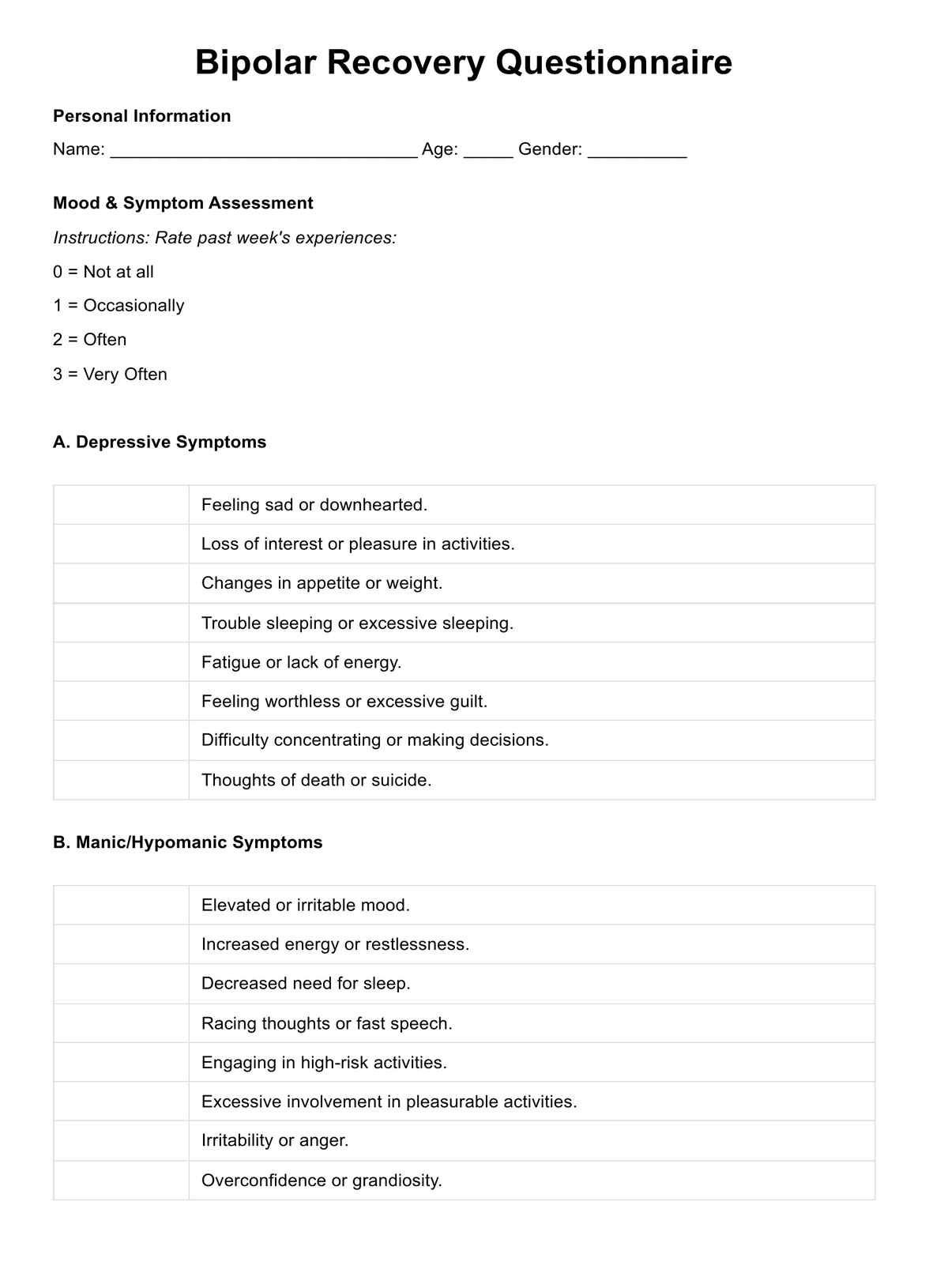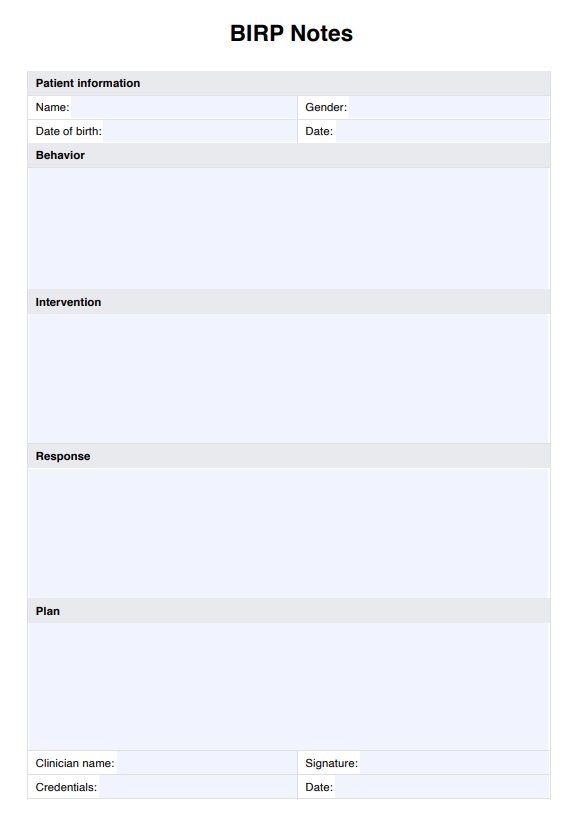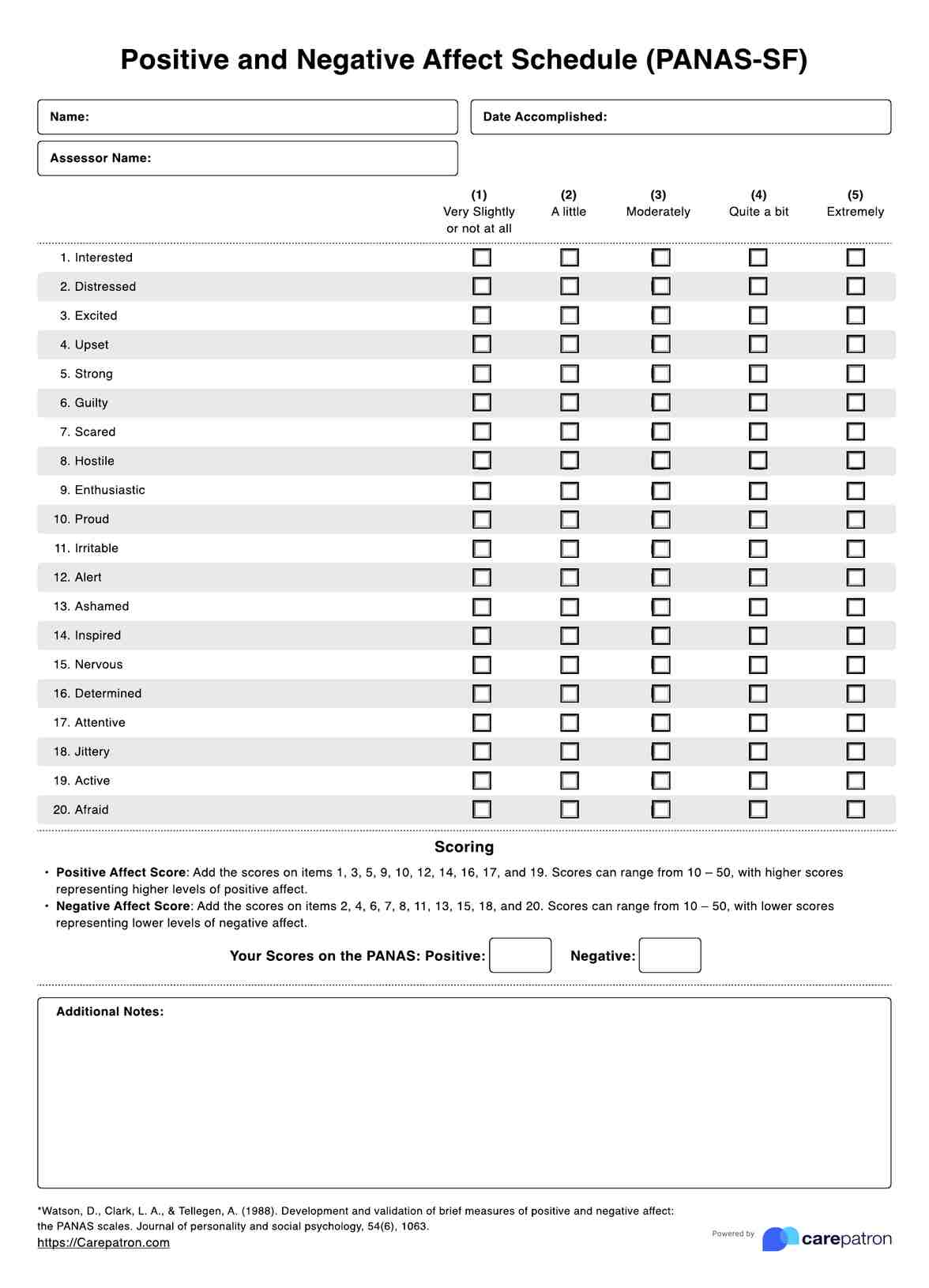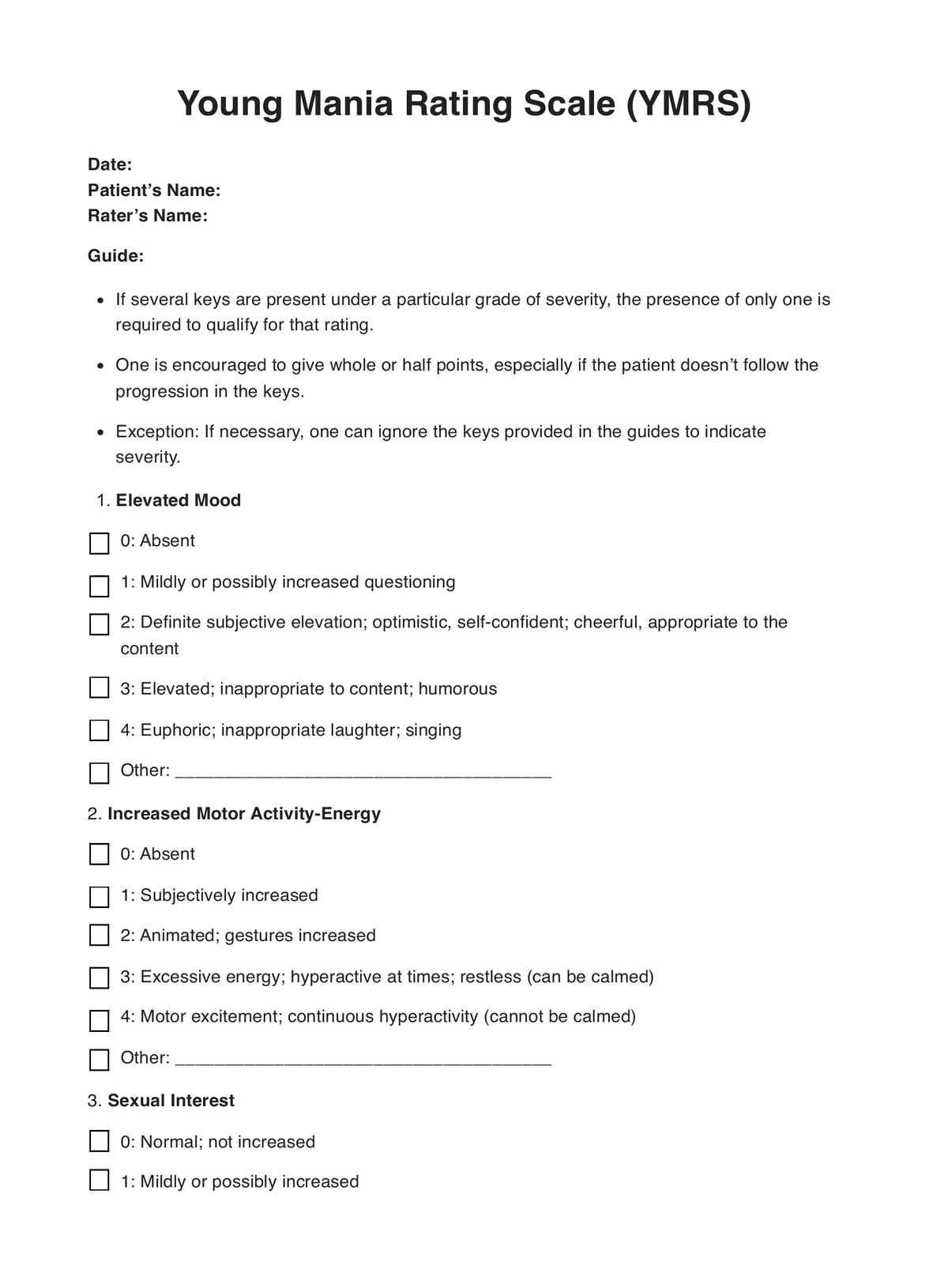Externalizing The Problem Worksheet
Learn more about Externalizing The Problem Worksheet, an essential narrative approach to understand better challenged and enhance problem solving.


What is an Externalizing the Problem Worksheet?
When faced with an issue or problem, it is typical for individuals to assume that they see the groundings of the problem to be within them or believe that something within their inner selves is causing the issue. This type of thinking is called internalizing the problem, a style of thinking that can lead to misappraisal of the source and may lead to poor mental health outcomes or low self-esteem.
Given that challenges are often multifaceted and involve aspects outside of ourselves, it is important to broaden the context of the problem. This is called externalizing problems, whereby the problem is better understood as a product of cultural practices, history, and life.
In narrative therapy, the aim of externalizing the problem is to engage in conversations that separate the individual's sense of self from the problem. This technique can be used in many ways in therapy or counseling services, depending on the person's life, ideas, and problems.
To simplify the process of externalizing problems, we at Carepatron have devised an Externalizing the Problem Worksheet. Mental health professionals, like therapists or counselors, can introduce the worksheet to clients to promote a new way of thinking and problem-solving to overcome challenges.
Externalizing The Problem Worksheet Template
Externalizing The Problem Worksheet Example
How to use our worksheet template
The worksheet is a resource to be used alongside externalizing conversations. It allows you to support clients in their reflections about the problem in relation to the context. This may include discussing contextual factors such as the relationships they are involved in, their responsibilities, identity, and the role of society. Here's how to apply the worksheet in practice:
Step 1: Access the worksheet
Begin by accessing our free Externalizing the Problem Worksheet by clicking "Use template," or download a printable PDF copy by following the link below:
Step 2: Introduce the worksheet
In your client consultations, you may find your client may benefit from using the worksheet. In this case, introduce the worksheet by presenting your client with either a digital or physical copy that they can fill in. Within this introduction, it would also be beneficial to explain the use of the resource in therapeutic practice and how it may support your client.
Step 3: Client worksheet completion
Allow your clients some time to complete the worksheet. Let clients explore and complete the worksheet themselves, only providing advice or suggestions if your client seeks clarity on a particular section.
Step 4: Interpret the responses
Alongside your client, review your client's responses to all sections of the worksheet. Within this step, it is crucial to note that you are simply discussing your client's answers to the corresponding section rather than critiquing their answers. It may be beneficial to ask follow-up questions for a specific response, mainly when answers are vague or require more information.
Step 5: Treatment planning
Now that you have insight into the client's interpretation of the problem, you can identify the factors influencing the problem. This can be used to inform narrative therapy techniques and approaches to help support your client's understanding. In particular, this may involve helping clients externalize the problem.
Step 6: Ongoing monitoring and support
Externalization and narrative therapy often involve more than one session. Therefore, it is essential to provide clients with ongoing monitoring and support. This will enhance your client's experiences and continue enhancing your understanding of the situation to inform better the resources and strategies implemented.
When would this worksheet be used?
An Externalizing the Problem worksheet can be used in various situations involving narrative practices, therapy, or introducing an alternative way of thinking to appraise a person's life or problem. The following are some particular instances in which this may be most readily applied:
Narrative therapy
Narrative therapy is a collaborative therapeutic process in which a mental health therapist partners with clients to reshape their life stories and create life-affirming stories. This narrative therapy approach emphasizes that problems do not define an individual’s self-identity, even if they’re a depressed person or struggling with significant trauma. Instead, narrative therapy seeks to separate the person from the issue, allowing clients to develop a positive and functional identity by focusing on their strengths and personal resources.
Within this framework, a narrative therapist employs narrative techniques like the exploring unique outcomes technique to help clients identify moments when they demonstrated resilience, hope, or problem-solving skills. These moments become building blocks for new perspectives on the problem. By externalizing the issue, clients recognize that their challenges are influenced by broader contexts rather than a personal failing. This approach not only reduces self-blame but also encourages deeper self-compassion and proactive solutions.
Post-traumatic stress therapy
In therapy sessions for post-traumatic stress, particularly for clients who have experienced violence or sexual abuse, externalizing the problem can significantly aid recovery. Clients may internalize the trauma, leading to self-blame and perpetuating dominant narratives of guilt and shame. By using narrative techniques such as reframing the experience into alternative stories, therapists can guide clients toward creating positive stories that validate their strength and resilience.
This process helps clients separate their identity from the trauma, shifting the focus away from self-judgment to healing and empowerment. In doing so, therapy provides a structured space for clients to construct more life-affirming stories, fostering emotional clarity and opening pathways for long-term recovery.
Problem-solving technique
An important aspect of problem-solving in therapy is reviewing the client's stories or recollections of their own stories. Engaging in externalizing conversations may provide broader contextualization of the problem and influencing factors, helping focus therapeutic solutions or revise narrative therapy treatment plans to address the problem.
The benefits of an Externalizing the Problem Worksheet
The Externalizing the Problem Worksheet is a valuable tool that facilitates the externalization process in narrative therapy, offering both you and your clients a structured way to approach complex issues. Here are the key benefits:
- Clarifying the problem: The worksheet helps break down the problem into identifiable parts, providing practitioners with insights into the client’s life context. This clarity supports the development of targeted and effective solutions.
- Empowering clients: The worksheet encourages clients to express their thoughts and feelings, fostering autonomy and reinforcing their ability to control the narrative surrounding their challenges.
- Deeper reflection: Clients can explore how the problem interacts with their life. This process may reveal new perspectives or bring attention to previously overlooked factors.
- Facilitating communication: The worksheet provides a non-threatening way for clients who struggle to articulate their experiences verbally to share their stories and emotions with you.
- Supporting therapeutic progress: The worksheet can be revisited in therapy sessions as an ongoing resource to track changes, refine strategies, and monitor the client’s growth over time.
Tips for externalizing conversations
When using the externalization technique, there are many things to consider ensuring an effective and ethical approach. The following are a few tips and considerations that may enhance your approach to this technique:
Language
In narrative therapy, the style of language and the way words are conveyed are essential. Externalizing conversations relies on using language that personifies the issue and using questions to delve deeper into a statement to find the root cause. Additionally, it helps to use words that create space between the person and the problem, such as 'it' and 'the.'
Understand the core principles of narrative therapy
At its heart, narrative therapy is about providing clients the tools to take charge of their own lives and gain an externalizing thinking style. The following are some of the core principles that should be considered before, during, and after using these techniques:
- Practitioners and clients should work towards reducing guilt and self-blame
- Breakdown unhelpful thoughts and patterns to establish new perspectives
- The understanding that reality is multi-faceted and that one's actions are not the only influencing factor
Encourage client empowerment
Success in narrative therapy can look different depending on the client and their situation. However, success can be observed when clients feel empowered to take control back within their lives and construct preferred stories. Therefore, practitioners must seek to empower their clients through building rapport, providing support, and allowing clients to control the narrative.
Commonly asked questions
Externalizing the problem in narrative therapy involves separating the issue from the individual's identity, framing it as something external to explore and address objectively. This reduces self-blame and fosters problem-solving.
In solution-focused therapy, externalizing the problem shifts the focus from the individual to the issue itself, enabling clients to concentrate on their strengths and solutions instead of personalizing the challenge.
The four stages are externalizing the problem, mapping its influence, exploring unique outcomes, and re-authoring the story to create a positive and empowering narrative.


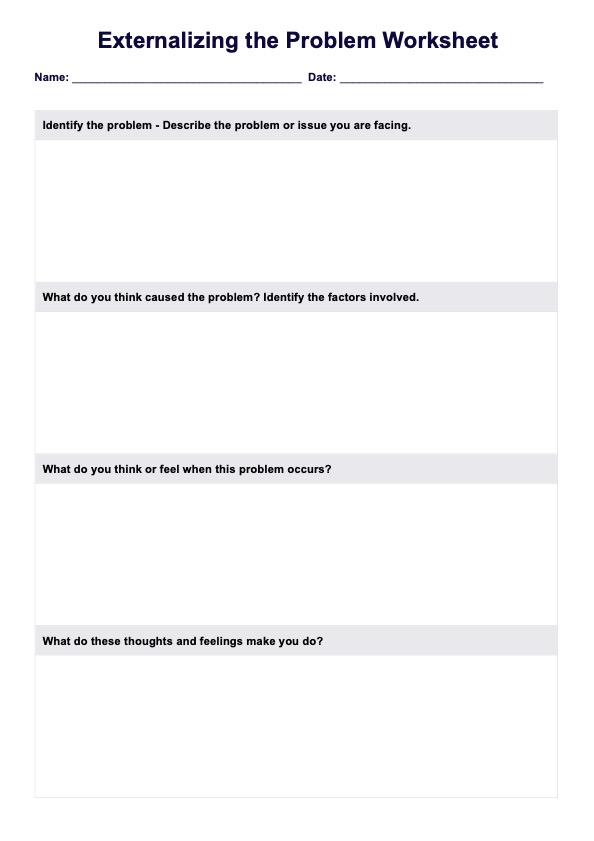
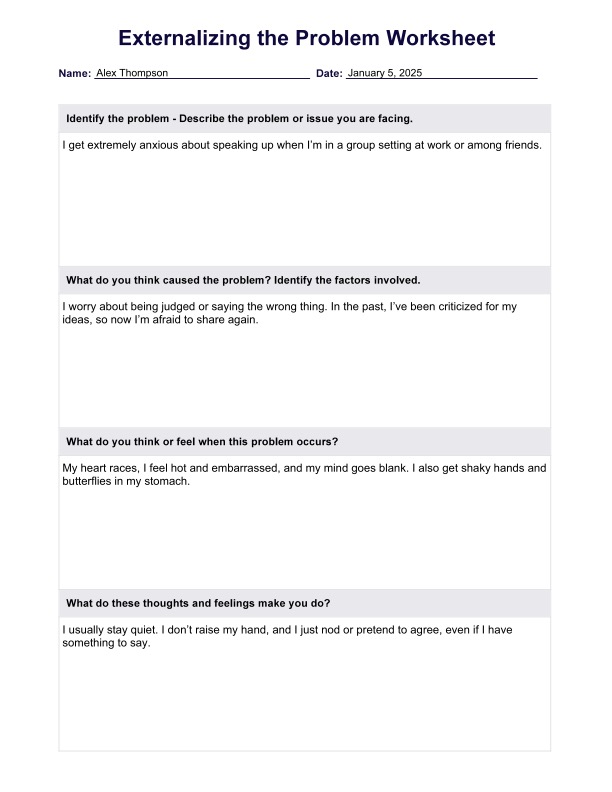

















-template.jpg)
























































































